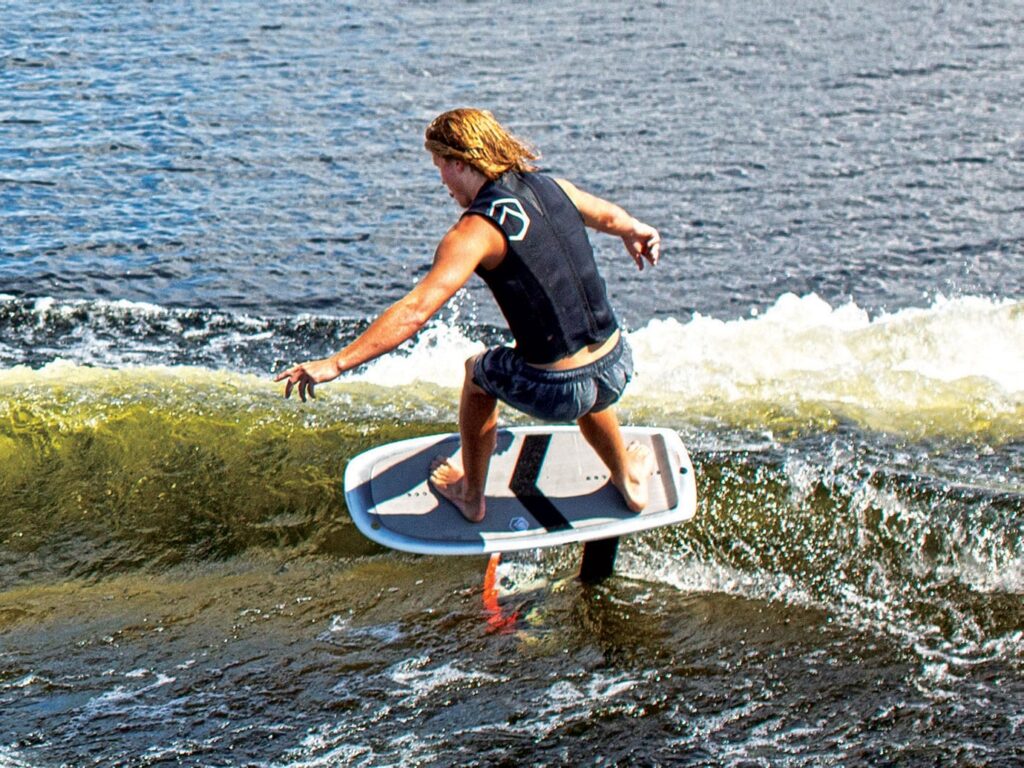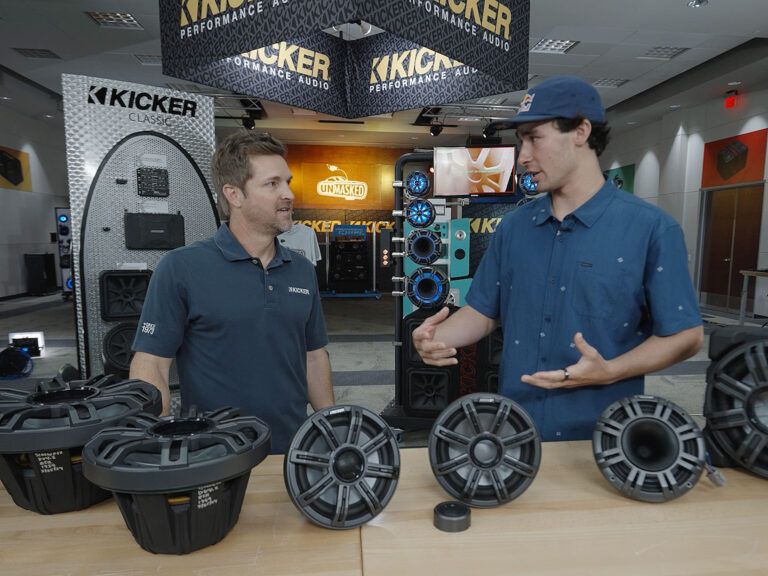
The last few years have lent themselves to plenty of changes and advancements in the watersports world, but one that has seemed to grip these athletes by storm is foiling.
Most people probably remember the good ol’ Sky Skis (or “air chairs”), and the concept is similar. However, instead of a wing attached to a slalom ski with a chair you strap into, the wing is part of what appears to be a type of wakesurf board.
I say “appears to be” because you cannot simply take any board, attach a wing to it and make it work as a foil. In fact, you’d be hard-pressed to find a watersport where the technicality of the equipment itself can make or break your success like it can in foiling. “Once you get the hang of it, though, it truly creates this incredible sense of feeling limitless out on the water,” says Clark Barrineau, a salesman at Boat Town in Texas.
Why? Because you can go anywhere, unlike wakesurfing, where you’re limited to the sweet spot behind the boat, or even wakeboarding, where your momentum disappears without the rope connecting you to the boat. When you ride a foil—and you’re able to pump out of the wave and across the water—suddenly, the entire lake becomes your playground. Ride back to the second, third, even fourth roller behind your own boat. Go steal a wave or back roller from another boat. Go say hi to friends who are taking a break, floating a couple hundred yards away from you. You suddenly have full, complete freedom over where you go out on the lake.
Well, assuming you have the skillset to get there.
There’s definitely a learning curve because the tiniest adjustments in placement, wing size, board type, boat driver and speed, rope length and more have an effect on the rider’s success, which is different than what most of us watersports enthusiasts are used to. Once you can ride a wakeboard comfortably, for example, you can most likely strap into any board and at least get up, ride around and have a good time. On a foil, however, you’ll quickly notice how big of a difference those tiny adjustments can make in your success. Not only do you have forward versus backward movements and heel versus toe weight changes, but now all of a sudden you also have up and down to think about. To add an extra layer to the foiling challenge, it also requires opposite muscle memories and movements from what wakesurfers are used to, providing that extra little fun element in the foil learning process.
If you’ve never tried foiling before, here’s some advice: Start slow, make the smallest movements and weight adjustments possible, and think the opposite of wakesurfing. I tried it for the first time on a mid-size wing placed at the very back of the board. This allowed for most of my weight to keep the nose of the board down more naturally as I learned to fly up on the wing.
“Your goal, the first time you ride, should be to keep that board as flat on the surface of the water as you can, and gradually let yourself ride higher out of the water as you get balanced,” says Jack Guenther, who served as my awesome coach. This mindset helps gradually ease you, the rider, into that third dimension of up and down out of the water, without suddenly throwing you up and off the board.
Once you can master these movements, the entire lake is your playground.







